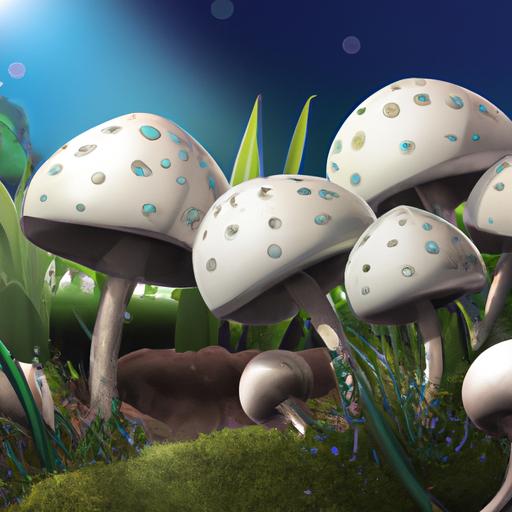Do you love mushrooms but find yourself confused about the differences between oyster and button mushrooms? Look no further! In this article, we will cover all you need to know about the differences between these two popular mushrooms, including their taste and texture, nutritional differences, common uses, and the health benefits of eating them.
We also cover how to grow and store them so you can get the most out of your mushroom experience.
Read on to learn more about oyster and button mushrooms!
Table of Contents
Short Answer
Oyster mushrooms are a type of mushroom with a delicate flavor and meaty texture.
They have a fan-like shape and vary in color from white to gray to tan.
Button mushrooms, also known as white mushrooms, are the most common variety of mushroom.
They have a mild flavor and firm texture and are usually white in color.
The main difference between oyster and button mushrooms is their flavor and texture.
Oyster mushrooms have a more delicate flavor and meaty texture compared to button mushrooms, which are milder in flavor and firmer in texture.
Comparison of Taste and Texture
When it comes to taste and texture, oyster mushrooms and button mushrooms are quite distinct.
Oyster mushrooms have a tender and velvety texture, and a mild, slightly sweet flavor.
In contrast, button mushrooms are firmer in texture and have a more intense, earthy flavor.
The mild flavor of oyster mushrooms makes them a great addition to a variety of dishes, while button mushrooms are ideal for dishes that need an extra kick of flavor.
For example, oyster mushrooms are a great choice for salads, omelets, and soups, while button mushrooms work best in stir-fries, sauces, and pizza toppings.
The difference in texture is also quite noticeable when cooking with these two types of mushrooms.
Oyster mushrooms are more delicate and can easily be overcooked, making them a better candidate for quick cooking methods such as sauting or stir-frying.
Button mushrooms, on the other hand, are firmer and can be cooked for a longer period of time without losing their texture.
This makes them a great choice for slow-cooked dishes such as stews and casseroles.
When it comes to taste and texture, oyster mushrooms and button mushrooms provide two very distinct options to cooks.
It is important to consider both taste and texture when deciding which mushroom is the right choice for a particular dish.
Nutritional Differences

When it comes to nutrition, oyster mushrooms and button mushrooms have some differences.
Oyster mushrooms have higher amounts of protein, fat, and fiber than button mushrooms, making them a more nutrient-dense option.
They also have more vitamins and minerals, including Vitamin D, Vitamin B6, and iron.
Button mushrooms, on the other hand, are low in fat and calories, but are still a good source of minerals such as potassium and phosphorus.
In terms of antioxidants, oyster mushrooms are the clear winner.
They contain high amounts of polyphenols, which are compounds that help protect the body from cell damage.
Button mushrooms also contain a small amount of polyphenols, but not nearly as much as oyster mushrooms.
When it comes to health benefits, oyster mushrooms are a great choice.
They can help boost the immune system, improve digestion, and reduce inflammation.
Button mushrooms can also provide health benefits, such as aiding in weight loss and protecting against certain types of cancer.
Overall, both oyster mushrooms and button mushrooms are excellent sources of nutrition.
They both contain many essential vitamins and minerals that can help promote good health.
However, oyster mushrooms have more nutritional benefits than button mushrooms, making them the better choice if youre looking for a nutrient-dense food.
Common Uses for Oyster Mushrooms
Oyster mushrooms are incredibly versatile and can be used in a variety of dishes.
They are most often used as a meat substitute in vegetarian dishes due to their chewy texture and mild flavor.
They are also great for adding an earthy flavor to soups and sauces, and are ideal for stir-fries and sauts.
Oyster mushrooms are also great for grilling and roasting, as their delicate texture can hold up against the heat.
They can even be used to make vegan bacon by marinating them in a smoky spice blend and then crisping them up in the oven.
Oyster mushrooms are also a great addition to pizza toppings, as their mild flavor and chewy texture can enhance the overall flavor of the dish.
Common Uses for Button Mushrooms

When it comes to mushrooms, button mushrooms are one of the most widely used varieties for cooking.
They are small, round, and white, with a firm texture and an earthy, umami flavor.
Button mushrooms are typically used in soups, sauces, stir-fries, and other dishes where their flavor and texture can be showcased.
They can also be grilled, roasted, fried, or sauted for a delicious addition to any meal.
Button mushrooms are also great for adding flavor to pasta dishes, omelets, and other egg dishes.
They can be added to salads for a boost of flavor and texture.
Button mushrooms are also a popular topping on pizzas for some extra savory flavor.
They can also be stuffed with cheese, herbs, and other ingredients for a flavorful and filling snack.
Growing Your Own Mushrooms
Growing your own mushrooms is becoming increasingly popular among home gardeners, and it’s no wonder why.
Not only do you get to enjoy the delicious flavors of the mushrooms you grow, but you also get the satisfaction of having grown them yourself.
Plus, growing your own mushrooms means you get to choose the type of mushroom you prefer.
Oyster mushrooms and button mushrooms are two popular types of mushrooms that can be grown at home.
While they may look similar, there are a few key differences between the two that you should be aware of.
To start with, oyster mushrooms and button mushrooms have different growing requirements.
Oyster mushrooms are a fast-growing variety and can be grown indoors or outdoors in a temperature range of 50-80 degrees Fahrenheit.
They also require a high level of humidity, so they should be grown in a humid environment or be misted regularly with water.
Button mushrooms, on the other hand, require cooler temperatures (40-60 degrees Fahrenheit) and a much lower level of humidity, so they are best grown outdoors in a shaded area.
Another key difference between oyster and button mushrooms is their flavor and texture.
Oyster mushrooms have a tender, velvety texture and a mild, slightly sweet flavor, while button mushrooms have a firmer texture and a more intense, earthy flavor.
This difference in flavor makes them ideal for different types of dishes.
Oyster mushrooms are great for stir fries and soups, while button mushrooms are better suited for sauted dishes and sauces.
Finally, there are also some nutritional differences between the two types of mushrooms.
Oyster mushrooms are higher in protein, vitamins, and minerals such as potassium, iron, and zinc, while button mushrooms are higher in fiber, folate, and magnesium.
So if you’re looking for a nutrient-dense food, oyster mushrooms are the way to go.
No matter which type of mushroom you choose to grow, you’ll be sure to enjoy the satisfaction of growing them yourself and being able to enjoy their delicious flavor.
Just be sure to do your research and understand the differences between oyster and button mushrooms before you start.
The Health Benefits of Eating Mushrooms

Mushrooms are a great addition to any diet, as they are low in calories, high in fiber, and packed with essential vitamins and minerals. But did you know that there are actually two main types of mushrooms: oyster mushrooms and button mushrooms? While they may look similar at first glance, they have some major differences in taste, texture, and nutrition. To help you choose the best type for your needs, here’s an overview of what makes oyster and button mushrooms unique.
Oyster mushrooms are known for their tender and velvety texture, and a mild, slightly sweet flavor.
This makes them great for stir-fries, soups, and salads.
In terms of nutrition, oyster mushrooms provide more vitamins and minerals than button mushrooms.
They are rich in B vitamins, copper, potassium, selenium, zinc, and even some vitamin D.
Theyre also a great source of fiber, protein, and antioxidants, making them a very healthy choice.
Button mushrooms, on the other hand, have a firmer texture and have a more intense, earthy flavor.
This makes them ideal for pizza toppings, marinades, and sauces.
They are also a great source of nutrition, with a good balance of vitamins and minerals.
They provide a good amount of B vitamins, copper, and zinc, as well as some vitamin D.
In terms of fiber and protein, they are slightly lower than oyster mushrooms, but they are still a great choice for your diet.
So, whats the difference between oyster and button mushrooms? Well, while both types are healthy and nutritious, oyster mushrooms are slightly higher in vitamins and minerals, and have a milder, sweeter flavor.
Button mushrooms, on the other hand, have a firmer texture and a more intense, earthy flavor.
Ultimately, the type of mushroom you choose will depend on your personal taste and the dish youre preparing.
How to Store Mushrooms
When it comes to storing mushrooms, both oyster and button mushrooms should be stored in the refrigerator.
For best results, store mushrooms in a paper bag or in a container with a lid and keep them away from other food items.
To prevent moisture from forming, be sure to cover the mushrooms with a damp paper towel before placing them in the refrigerator.
For optimal freshness, mushrooms should be used within a few days of purchase.
If you have mushrooms that are past their prime, they can still be used in cooked dishes like stir-fries, soups, and sauces.
However, the flavor may be slightly diminished.
When it comes to freezing mushrooms, oyster mushrooms are the best choice.
To freeze oyster mushrooms, simply clean them, dry them, and place them on a baking sheet lined with parchment paper.
Place the baking sheet in the freezer and freeze for about one hour.
Once the mushrooms are frozen, transfer them to an airtight container and store them in the freezer for up to three months.
Button mushrooms can be frozen as well, but they may become soggy if frozen for too long.
Final Thoughts
Now you know the difference between oyster and button mushrooms! While they may look similar on the surface, their taste, texture, and nutritional content make them very different from each other.
Whether you’re using them to make a delicious dish, boosting the nutrition of your meals, or growing them in your own backyard, oyster and button mushrooms are both incredibly versatile and nutritious.
So next time you’re in the store or looking for a new recipe, don’t forget the power of mushrooms!

